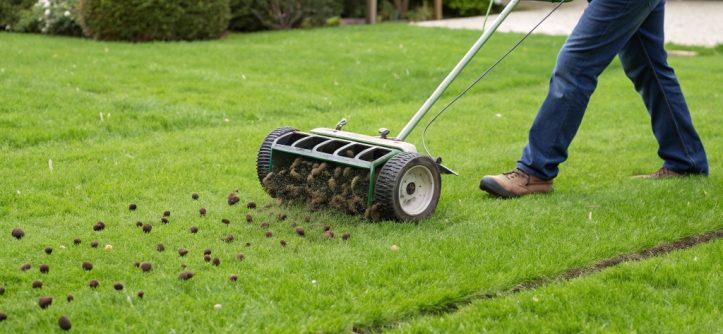Do you have a garden with grass and you want it to look well-kept, beautiful, and lush? It is essential that your garden receives the necessary care so that the grass grows healthy and strong. For this, it is essential that in addition to giving vitamins and nutrients, from time to time, you provide oxygen to the grass, so that it reaches the roots properly and improves its development. We explain how to aerate the lawn. Carry out the following techniques and you will be able to loosen the soil to facilitate the entry of air and water into the lawn. You will notice the difference.
Steps to follow:
Step: 1
Before knowing how and when you have to aerate your garden, you should make sure what type of grass you have in your home. To do this, you must look at the most active growth period, as this will determine the most appropriate way to aerate it. It is also important to know the type of sand you have. Dense soil is usually aerated once a year, since it is more compact, while sandy soil can be aerated once every two years, more or less. For more exact data, consult your usual garden store or nursery.
Step: 2
If your grass grows more in warmer times, that is, during the summer monthsTip, it is best to aerate it in the last period of spring or at the beginning of summer. Warm-growing types of grass are buffalo, St. Augustine, and vermudagrass. In case it grows in the autumn and winter months, in cold times, you should air it so that it can recover just one month before the frost period. The most common are Lolium, fescue or bluegrass.
Step: 3
Another trick to know if you should, or not, aerate the lawn is to take into account the use you give it. That is, if you usually drive on it or step on it often, it is better to air it once a year, so you will prevent the soil from compacting too much. If you have just planted it, you will have to wait more than a year, so you will let it grow healthy and lush.
Step: 4
To carry out the aeration, you can use manual or motor tools. Namely:
Mechanical – This method uses a motorized machine perfect for large areas of lawn. Its nail system helps to quickly make holes in the ground that will favor the entry of air and water.
- Manual: the manual system is ideal for small gardens. You can use a type of cylinder or the
- Skewers. Both help to pierce the earth to provide it with oxygen and food.
Step: 5
Once you have selected the type of machine that you will use to aerate the lawn, you must prepare the soil, so that this process is more effective. For this reason, we recommend you clean and cut the grass. In this way, you will allow the soil to be more prepared, without elements that hinder the entry of oxygen and nutrients.
Step: 6
Next, you should check the soil moisture. If you notice that it is too dry, due to weather changes, you should water the soil a few days before proceeding with airing. Remember that wet earth is softer, so you can work better with drills, whether manual or mechanical.
Step: 7
Take a good look at your lawn and define the areas that need more airing. Not all areas are equally traveled or have the same characteristics. We recommend you study a little where you consider it most necessary to aerate the lawn and work more there. The harder sections will take you longer.
Step: 8
With all this, the time has come to aerate the lawn. Put the aerating tool that you are going to use in one of the corners of your garden. You want to run the hole punch in straight line rows, all over the lawn, so that it is even on you. For the hardest areas, it will be enough to pass the aerator a couple of times; for the softest ones, once will be enough. In case you need to make deeper holes to better aerate your garden, we advise you to pass the perforator in the opposite direction through the hardest section.
Step: 9
To achieve optimal results, you should let the sections of soil rest once they have been drilled. Likewise, it is advisable to leave the parts extracted from the drilling in the same soil, as they will end up being compost that will help nourish the soil.
Step: 10
Finally, once you have finished drilling, you must supply the soil with fertilizers. To help your new grass grow healthy and lush, spread peat, compost, sand, or other chemical fertilizers. Thanks to the holes, these nutrients will be absorbed much better, and together with the air, they will make the roots sprout more strongly.





Leave a Reply